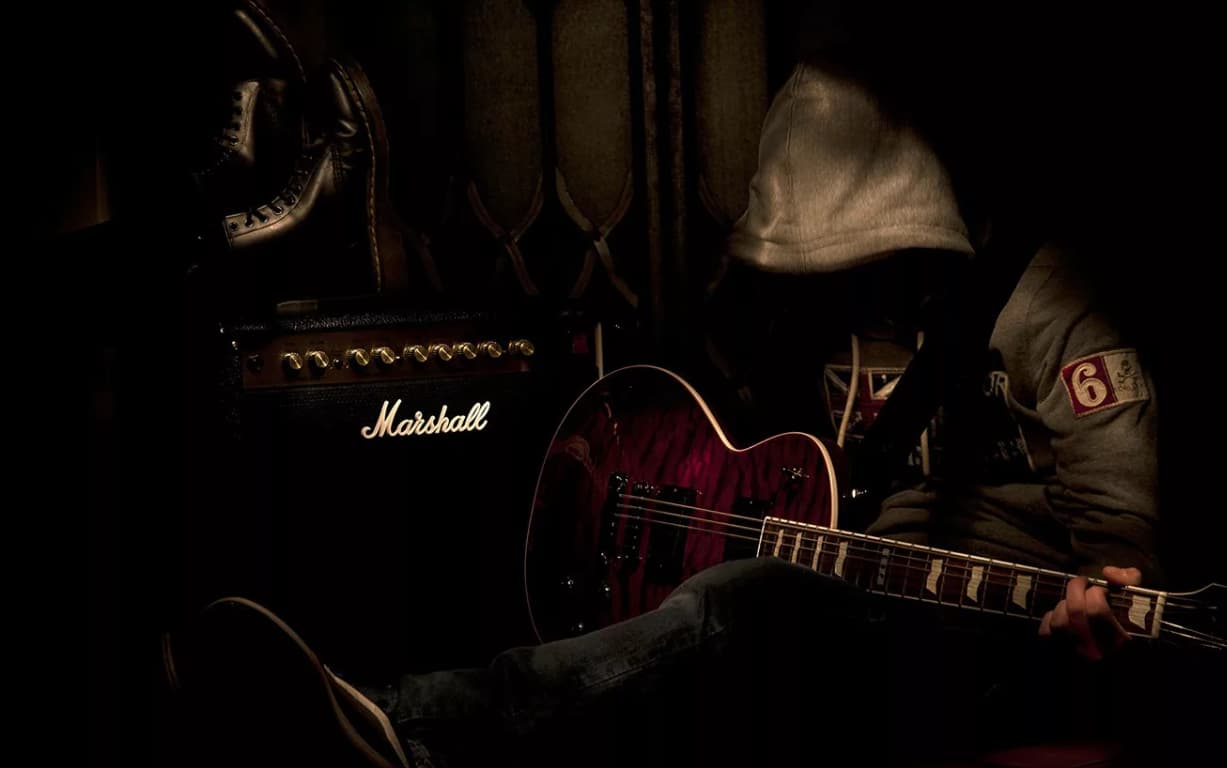Initially blending avant-garde electronic experimentation with post-punk aggression, Industrial music eventually morphed into a raw and forceful fusion of rock and electronics.
The dominant industrial sound was incredibly harsh and scary, but the main elements were the deliberately mechanical sound and the ideas of alienation and inhumanity. Artists were fascinated by the sounds of the modern metropolis, the size, order and coherence of complex machinery.
From Avant-Garde to Mainstream
Industrial music transitioned from its experimental origins to a relentless jackhammer beat, offering an alternative to mainstream dance music. Despite its harsh and intimidating sound, Industrial music embraced the mechanical and explored themes of alienation and dehumanization, drawing inspiration from the urban landscape and modern machinery.

History
Remaining underground until the early 1990s, Industrial music gained widespread attention through bands like Ministry and Nine Inch Nails, attracting alternative rock and heavy metal fans. However, many bands preferred to stay underground, believing fame contradicted the genre’s philosophy.
The Industrial Aesthetic
Industrial music often employs simple timbres and repetitive patterns, inducing an urban trance in listeners. Imagery evoked includes towering cityscapes, bustling factories, and haunting echoes of historical atrocities.
Artistic Roots
The roots of Industrial music trace back to early 20th-century futurist movements, where artists sought to capture the essence of industrialization. Composers experimented with noise and non-musical sounds, laying the groundwork for Industrial’s fascination with urban cacophony.
Modern Innovations
Industrial bands like Einstürzende Neubauten, formed in 1980, pushed the boundaries of musical expression by using unconventional instruments such as steel plates, electric drills, and jackhammers, echoing the industrial landscape in their performances.

The Second Wave Emerges
In the late 1980s, bands like Skinny Puppy, Front 242, and Nitzer Ebb infused industrial music with a faster dance tempo, marking the beginning of the second wave. This period saw the emergence of a distinct style known as electronic body music, with the Wax Trax label at its epicenter.
Blending Genres: Ministry and KMFDM
Ministry and KMFDM rose to prominence by blending heavy metal guitar riffs with electronic body music in the late 1980s and early 1990s. This fusion attracted a large following and played a significant role in shaping the industrial music landscape.
Trent Reznor and Nine Inch Nails
Trent Reznor, fronting Nine Inch Nails, revolutionized industrial music by introducing conventional song structures and adding a human touch to the band’s sound. His innovative approach propelled Nine Inch Nails to stardom and influenced the direction of the genre.

Genre Sound
Synthesizers and Sound Manipulation
Unlike their predecessors, second-wave industrial bands heavily relied on synthesizers to shape both musical and nonmusical sounds. Employing various distortions, they processed guitar signals and vocals, creating a distinct and aggressive industrial sound.
Fusing Industrial with Other Genres
Electronic drums and drum machines were instrumental in merging industrial sounds with heavy riffs, techno rhythms, and tape manipulation effects. This eclectic mix ranged from Ministry’s intense militaristic vibe to Coil’s ambient soundscapes.
Exploring Unique Sounds
Laibach, a Slovenian band, combined industrial, heavy metal, and techno with baroque organ and choir elements, adding a unique and majestic dimension to their music.
Innovative Techniques
In the early 1980s, King Crimson pioneered an industrial sound using unconventional electric instruments and unique guitar processing techniques, setting the stage for future experimentation in the genre.

